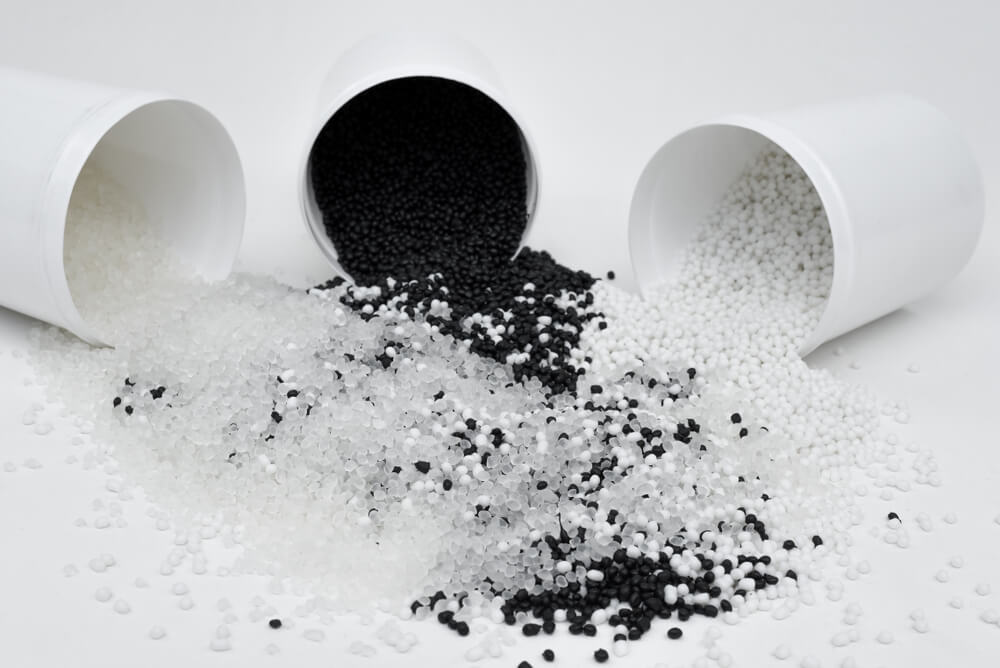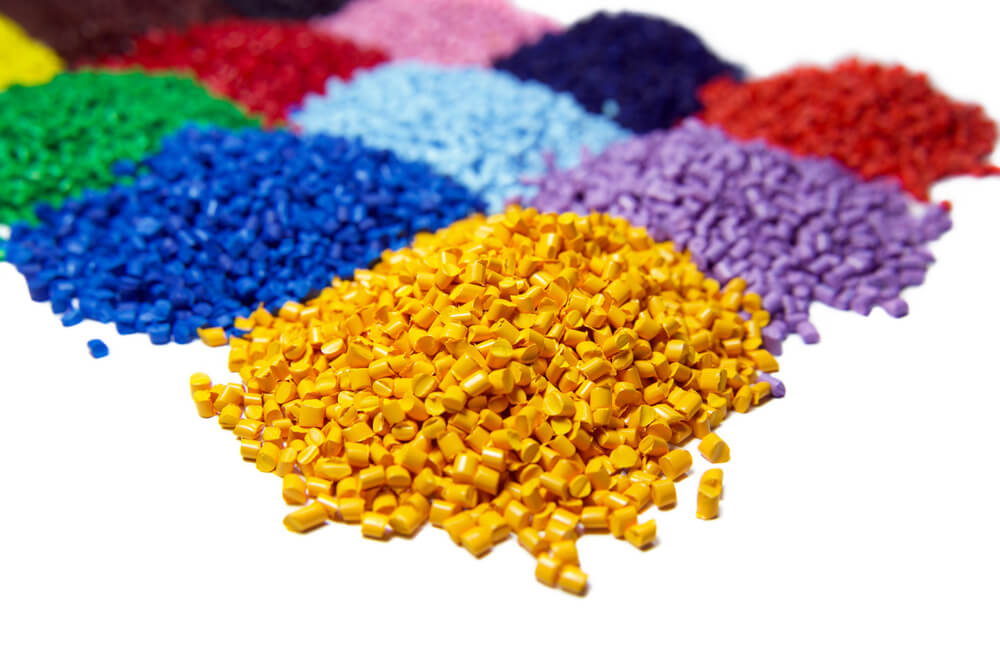In the industry sector of plastics manufacturing or processing, why can you benefit from investing in blending/dosing equipment?
A dosing calculator is a tool that helps you determine the right amount of plastic pellets or powder needed to produce a given product. On the other hand, a dosing blender is used to mix different types and grades of plastic pellets/powder together, allowing manufacturers and processors to create custom blends. Working together, an effective dosing system dispenses predefined amounts of various materials in a specified time period, as well as in a defined ratio.
In this blog post, we'll explore what purpose each tool serves and how it can help you in your business, in terms of a rapid return on investment, improved cost efficiency, and better quality.
Why Do You Need A Dosing Calculator/Blender?
In order to understand when you need dosing or blending, it's important to first acquaint yourself with how plastics are made. Plastics are created by melting down pellets or powder and molding them into the desired shape. The type of plastic, as well as the size and shape of the final products, will dictate how much raw material is needed. This is where dosing and blending come in.
What Is Dosing?
Dosing refers to the process of adding the right amount of plastic pellets or powder to a melting pot. When you know the weight or volume of plastic you need, dosing allows you to add the precise amount required. This is important because too much or too little raw material can result in a flawed final product. There are two main types of dosing:
- Volume (volumetric dosing)
- Weight (gravimetric dosing & loss-in weight)
When selected right, a dosing calculator takes the guesswork out of figuring out how much plastic you need: It takes into account the type of plastic, the size and shape of the final product, and the production process to give you an accurate estimate. This can save you a lot of time and money, as you won't need to overproduce or underproduce your product.
What Is Blending?
Blending is the process of mixing together different types and grades of plastic pellets/powder. This can be done by hand or with a dosing blender.
A dosing blender is a specialized piece of equipment that mixes the pellets/powder together consistently and homogeneously. It's used when you need to create a custom blend of plastic pellets or powder.
This could be for aesthetic reasons, such as creating a marbled effect, or for functional reasons, such as creating a certain type of plastic with higher resilience. Either way, a dosing blender allows you to create the perfect blend of raw materials for your needs.
What's the Difference between Volumetric and Gravimetric Dosing?
Volumetric and gravimetric dosing are two technologies for adding the right amount of plastic pellets or powder to a melting pot. Volumetric dosing is done by measuring the volume of pellets or powder, while gravimetric dosing is done by measuring the weight. In other words, a volumetric system doses material according to the space it occupies, while a gravimetric system determines the amount of material to be dosed by weight. Below we have compared the two options in more detail:
Gravimetric Dosing Calculator
Gravimetric dosing is the more accurate of the two methods, as it takes into account the density of the pellets/powder. This technique can be further divided into two categories: gravimetric and loss-in-weight systems. Among these two types, loss-in-weight dosing calculators come with a number of features and benefits. Firstly, they are built with a more complex composition, as different material types are distributed and metered using different scales; hence, weighing can be processed at a higher speed.
Also, the precision of loss-in-weight dosing calculators is higher compared to gravimetric ones, in that a loss-in-weight dosing calculator initiates the weighing process once the materials leave the scale. In contrast, in a gravimetric system, there is a free-fall distance between the metering gate and the scale. This design can sometimes render measurement less accurate.
Volumetric Dosing Calculator
The dosing/blending technology was originally developed according to volumetric principles. Volumetric units control metering devices by time only. Once calibrated, a volumetric dosing calculator provides a relatively consistent volume of material per second.
Volumetric dosing in general is simpler to configure, faster to install, and cheaper. It also doesn't require specialized equipment because the dosing system only needs to be able to measure volume, not weight. That said, it must be calibrated regularly to obtain a satisfactory level of precision.
Gravimetric vs Volumetric: Which Should You Choose?
Select the type of dosing calculator according to your needs. For instance, if precision is paramount to your processes, then gravimetric dosing is the way to go. Meanwhile, if the material flow is mostly consistent, and/or the material mass does not change, a volumetric dosing calculator can be your preferred option.
Different Ways of Weight Control in Dosing/Blending
Gravimetric Control Dosing Blender
This type of dosing blender comes only with one scale—which accumulates and measures the weight of materials. A gravimetric control blender generally takes longer to conduct the dosing process, and sometimes a time lag is unavoidable.
Loss-in-Weight Dosing Blender
With scales spreading across different stations and conducting dosing simultaneously, a loss-in-weight system provides higher speed, precision, and efficiency. Once material flows exit the equipment, a scale measures correspondingly. This contributes to accurate control of the dosing procedure and ensures constant material throughput.

Our Dosing Calculator and Blender Series
Here at Flying Tiger, we have developed a dosing blender series that introduces types of materials into a blend for your plastics processing requirements. Our dosing blenders come in a range of sizes and can be used for both volumetric and gravimetric dosing. Plus, they're easy to operate and come with a built-in dosing calculator, so you can be sure you're addressing the right amount of material every time.
If you're not sure which dosing calculator/blender is right for you, here is a quick guide:
1. Loss-In-Weight Dosing Blender (Weight Control)
Our loss-in-weight dosing blender is an excellent choice for plastics businesses that operate on a high level of accuracy.
Each system is designed to do continuous dosing. It also comes with a 7" color touch panel and a PLC controller. It can calculate the ideal RPM (between 1~1000) automatically, which ensures more accurate and stable dosing. This blender even has a small mixer to make sure that the materials are thoroughly mixed and blended.
Like our other blender models, it also features a material shortage alarm that will send an alert sound when the raw material is running low, helping you avoid any production disruptions.
2. Gravimetric Dosing Blender (Weight Control)
Unlike volumetric models, Gravemetirc blenders do not require calibration for set-up. Materials are weighed as a part of their normal operation during every blending cycle. Hence, when configuring for operation, users can directly input specific weight or even ratio percentage settings into the control with no translation into time settings.
Our gravimetric control dosing blender features a more efficient design, higher performance components, twin cone gates designed for precise dosage, and improved product uniformity. It even has a vertical mixer design, allowing you to change materials faster without any residue. Lastly, it comes with a 7" screen and PLC controller to help you easily monitor the operational status of your system.
3. Volumetric Dosing Blender
In contrast to a weight control (gravimetric or loss-in-weight) blender, a volumetric dosing blender supplies the production system with a certain volume of material in a set timeframe. Its operation depends on the RPM speed of dosing stations, and this calculation is mainly based on the amount/weight of materials. In more detail, the designated speed of each type of material is measured and configured by operationists. The data will then be stored and are applicable to the many stops of a volumetric dosing system.
With our volumetric blender, there's no need to manually set the coloring every time, which means you can save both storage space and time. It also has a 7" touch panel and PLC controller. It uses servo motor control to control the RPM speed, helping you ensure an accurate dose each time. You can also have it automatically calculate the RPM speed by simply entering the material or material weight percentage.
As you can see, our dosing blender series is an excellent option for businesses of any size. So, if you're looking for an accurate, easy-to-use, and reliable dosing system, then be sure to check out our product series today!
Back







